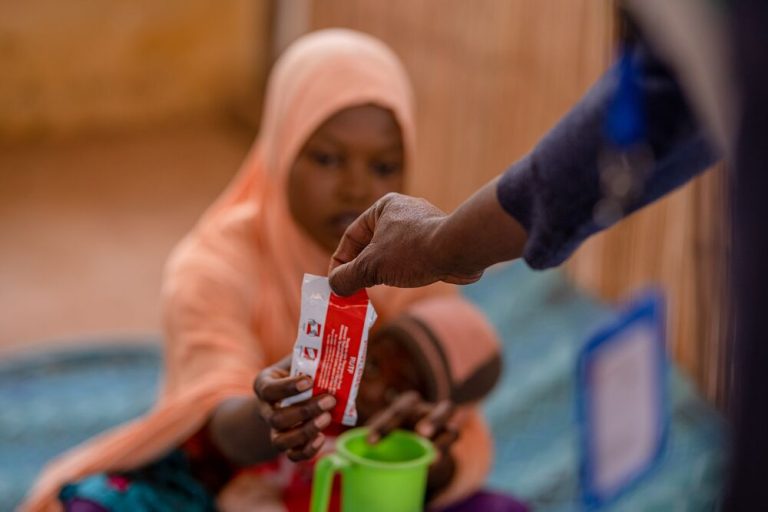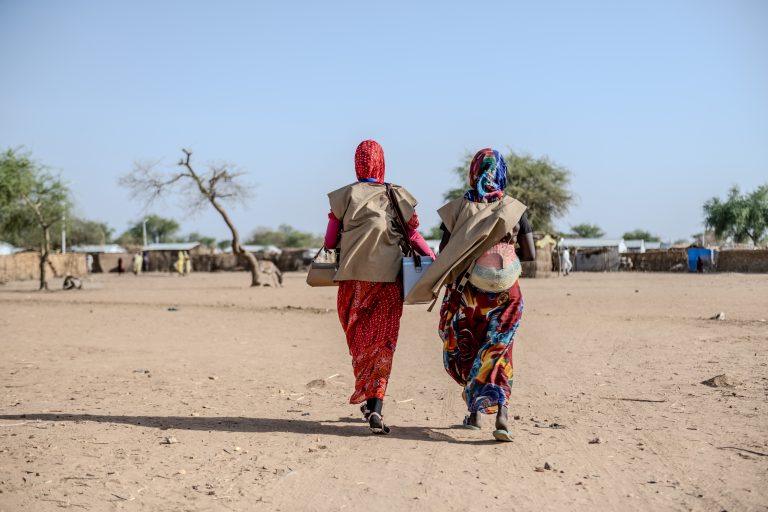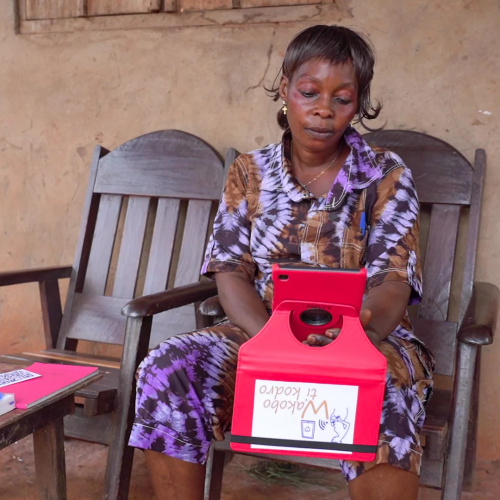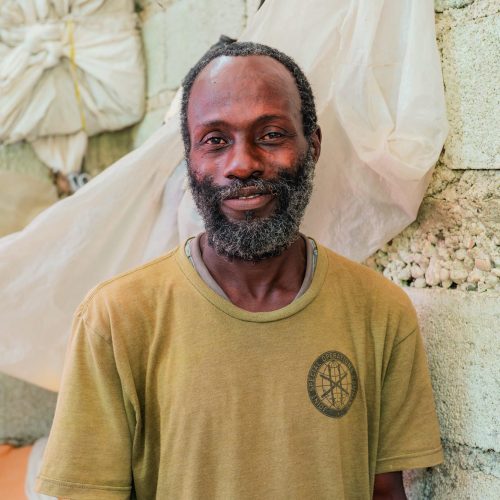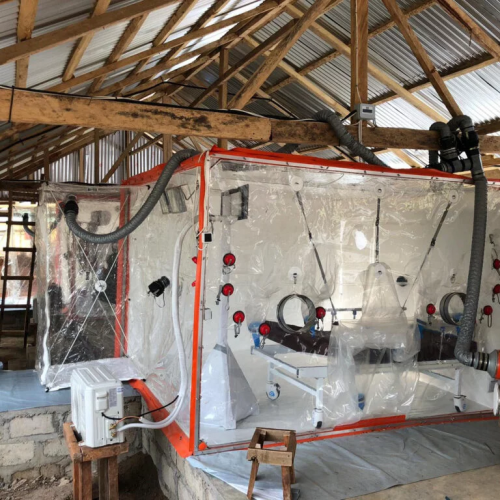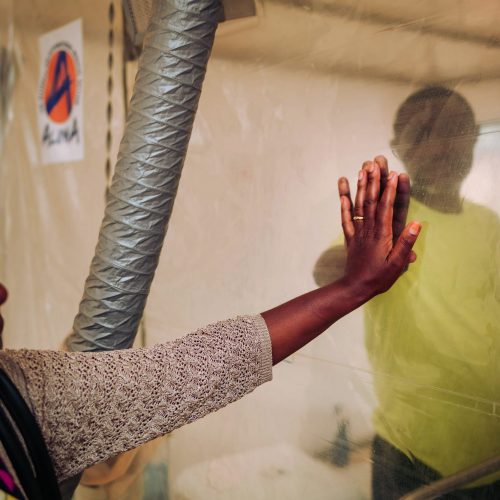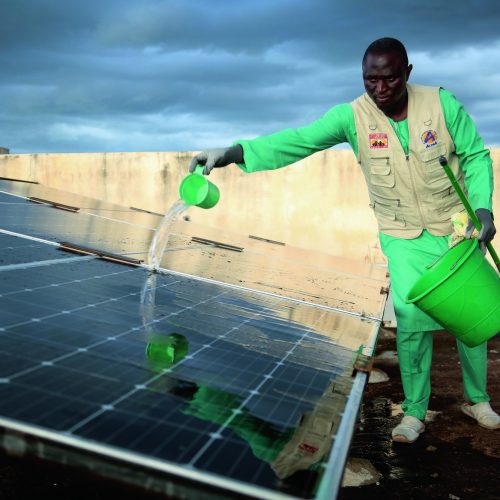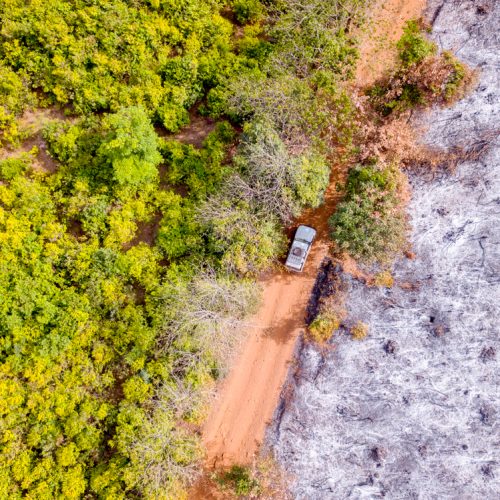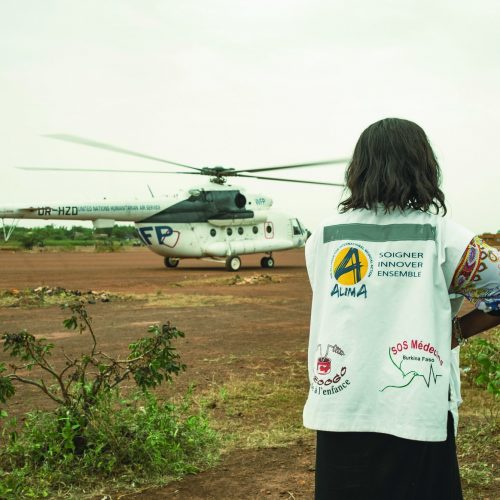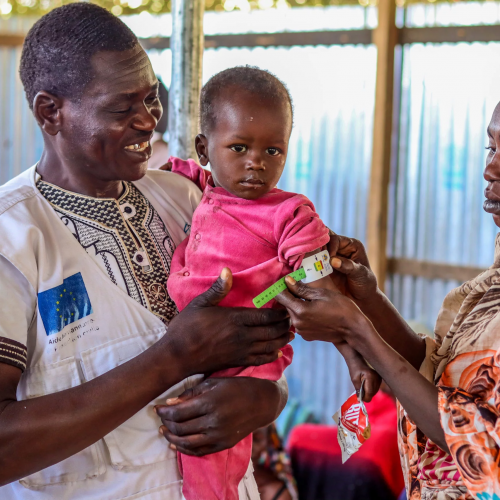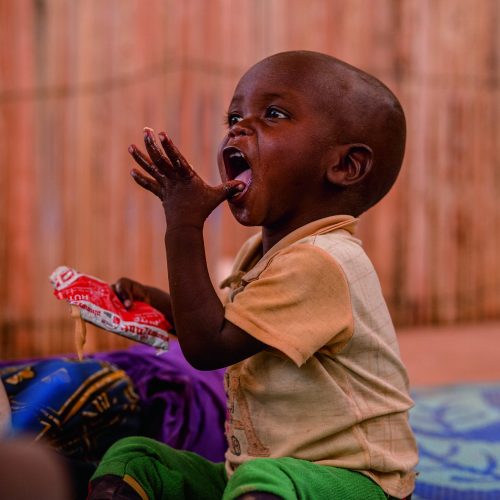Last Update: April 11, 2019
Background: the Ebola outbreak in DRC is increasing again
According to figures provided by the Ministry of Health of the Democratic Republic of the Congo (DRC) and the World Health Organization (WHO), 72 confirmed cases of the Ebola virus disease were reported in the week of March 25, 2019, and 65 in the week of April 1, the highest peak since the outbreak began in August 2018.
This Ebola outbreak is the second largest in history after the 2014-2016 outbreak that killed more than 11,000 people in West Africa. The threshold of 1,000 confirmed cases in DRC was exceeded on March 24, 2019. The outbreak is affecting the provinces of North Kivu and Ituri in the east of the country.
This is the first Ebola outbreak in an area of active conflict which therefore poses significant operational challenges. In February 2019, two Ebola Treatment Centers in Katwa and Butembo experienced direct attacks.
ALIMA’s response to the Ebola outbreak in the DRC: Treatment, research and community inclusion
Since the beginning of the outbreak, ALIMA has been working in collaboration with the Ministry of Health, WHO, and the several actors involved in the response to help the population affected by Ebola.
In line with its approach, ALIMA has deployed a medical response that combines emergency medical care, research and innovation, and working with communities and local actors.
ALIMA draws on its experience in responding to viral hemorrhagic fevers in the DRC, Guinea, Nigeria and Niger, and in conducting clinical and research trials on Ebola in Guinea, in partnership with INSERM and the NIH.
Support for the Ebola Treatment Center in Beni
ALIMA has been operating an Ebola Treatment Center (ETC) located in the General Referral Hospital of Beni since August 15, 2018, supporting the Ministry of Health of the DRC (see press release). Beni is a city of about 400,000 inhabitants located in the northern part of North Kivu province.
As of April 7, 2019, ALIMA and the Ministry of Health have cared for nearly 2,500 patients (confirmed and suspected) at the ETC in Beni, including 234 confirmed patients. Among these patients, 38 were children under 5 years of age and 74 under 18 years of age. 125 people were cured, which represents a 57% cure rate (13 patients are still hospitalized).
ALIMA’s ETC in Beni has a capacity of 56 beds, including 12 CUBEs (Biosecure Emergency Care Units for Outbreaks) with a dedicated team of ALIMA staff of 113 employees, 20 of whom are international.
After several weeks of a decline in confirmed cases and admitted patients, in the last two weeks, Beni has once again become one of the most affected areas, along with Mandima and Butembo. As of April 11, 12 confirmed patients and 31 suspected cases were hospitalized in the ETC.
Supporting the Transit Center and the establishment of an “Integrated Observation Unit” in health centers in Katwa
Since February 11, following the geographical spread of the outbreak, ALIMA deployed teams in the Katwa health zone in Butembo, a city of about one million residents, and is supporting the Ministry of Health by operating a 20-bed Transit Center.
Faced with the need to work with the community to ensure that it takes ownership of various elements of the response, ALIMA teams proposed a new approach: the “Integrated Observation Unit”. Opened since March 15th, this Observation Unit is integrated to existing health centers. It gives the means to health centers to manage suspected cases of Ebola.
In each project, ALIMA carries out awareness-raising activities with communities through ETC visits and meetings in communities. The aim is to present ALIMA’s activities to local residents and communities so that they understand and accept our response. With the new Integrated Observation Unit (IOU) approach, discussions with various community leaders, neighborhood leaders and local health staff make it possible to define together which health structure will be able to accommodate an IOU.
Awareness-raising activities in schools were also carried out: a play followed by a question-and-answer session to raise awareness among school children about Ebola and the importance of visiting a center as soon as first signs appeared.
ALIMA’s research and innovation activities on Ebola
One of ALIMA’s objectives on Ebola is to significantly improve the quality of medical care for Ebola patients.
A new standard of care built around a new innovation: The CUBE
ALIMA launched initiatives to change the management and organization of the treatment protocol for Ebola with the integration of ALIMA’s innovative CUBE (Biosecure Emergency Care Unit for Outbreaks) – watch the video.
The CUBE is a tool designed by ALIMA that transforms the management of patients with Ebola, both for medical teams and for patients and their families (Read the article in the Lancet on the CUBE “FRONTLINE: a new treatment facility for Ebola virus disease”).
The CUBE is a single patient unit with a biosecurity level of P4. Each CUBE has a bed, a complete set of monitoring equipment, a decontamination system, syringe pumps, oxygen therapy, and air conditioning.
The main technical advantage of the device is the two half-combinations, integrated into the transparent walls. Therefore the caregiver can perform medical care, including intensive care and invasive procedures, without having to go through the laborious personal protection equipment phase. Each unit is equipped with two pairs of waterproof sleeves, where the caregiver can access the patient safely and administer care from outside.
Among many other advantages, the CUBE also guarantees more reactive patient monitoring. The transparent walls make interactive and comforting visits possible, as the patient is actually able to see the faces of caregivers and family members.
A significantly improved standard of care for the treatment of Ebola patients
In the ETC supported by ALIMA, the standard of care provided by medical teams has radically evolved. New protocols and biomedical equipment have been integrated during this response, such as the portable ultrasound scanner and resuscitation monitors connected by Wifi and Bluetooth.
For more information see articles published in scientific journals co-authored by Dr. Richard Kojan, President of ALIMA:
– an article published in the Lancet: “The evolution of supportive care for Ebola virus disease”
– an article published in the New England Journal of Medicine:”Shifting the Paradigm – Applying Universal Standards of Care to Ebola Virus Disease”
Data management has also been improved through new collection methods, standardized with other partners, providing more accurate information throughout a patient’s hospital stay. Further biomedical analyses are possible and may also help to improve clinical practices in the future.
New treatments are offered to patients and a clinical trial is carried out to assess their safety and efficacy
ALIMA was able to integrate new treatments against Ebola at the end of August 2018. Initially, this was done within the framework of the compassionate use protocol supervised by the Ministry of Health and WHO (MEURI WHO protocol).
In a second step, since November 20, 2018, ALIMA has been implementing a multi-centric, randomized clinical trial to evaluate the safety and efficacy of these therapies. This trial involves the Ministry of Health, the National Institute of Biomedical Research (INRB) of the DRC, WHO, the National Institute of Allergy and Infectious Diseases (NIAID) which is part of the National Institutes of Health (NIH) of the United States, ALIMA, Médecins Sans Frontières/Doctors Without Borders (MSF), and other organizations.
Four promising drugs are evaluated and compared to assess their safety and determine which is the most effective. Patients who wish to join the trial can do so on a voluntary basis.
Photo by: John Wessels / ALIMA

